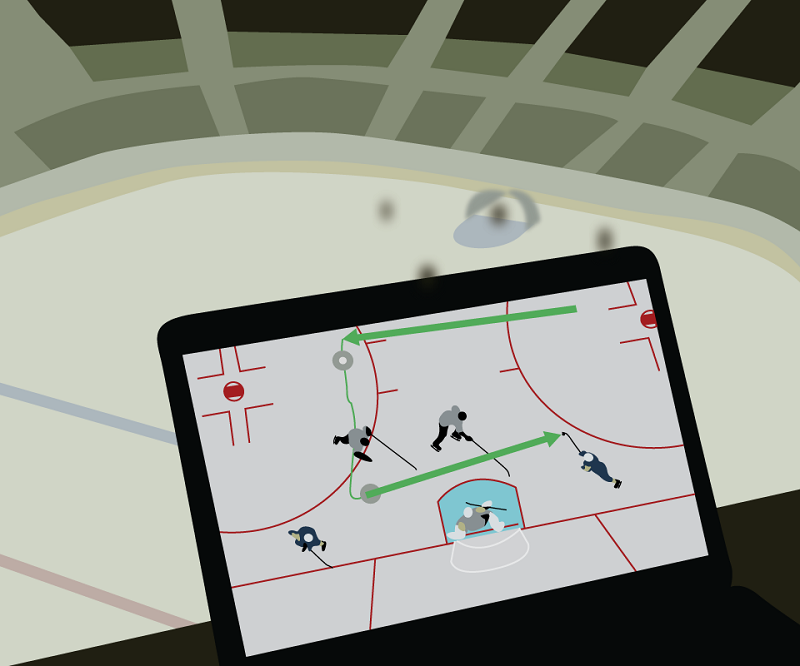Montreal company Sportlogiq teams up with NHL for new technology
At the 1996 NHL All-Star Game in Boston, Fox and the NHL introduced a puck tracking system that superimposed glowing lights around the puck. When a player’s shot was strong, it glowed red; if it was weaker, it would be blue. Fans didn’t like it, and when Fox lost its NHL rights after the 1997-98 season, the glowing puck died with it.
Over twenty years later, the league reintroduced its new player tracking system at the 2019 All-Star Game. Next season, NHL fans will get to see these player tracking systems implemented in broadcasts for the first time, and a company from Montreal will help release the new technology.
Sportlogiq currently works with 27 NHL teams to track player movements on the ice. Their system uses an algorithm that tracks players through broadcast cameras, but the NHL will place sensors on players’ equipment and pucks.
“Player tracking includes where a player is on the ice, how fast they’re skating, and everything else to what they’re doing on the ice,” said Christopher Boucher, Sportlogiq’s VP Sports Development, Analytics & Hockey Operations. “What’s tracked is location of all players and every puck possession event that occurs. This allows us to have information on players and teams.”
Although Boucher couldn’t go into more detail, Sportlogiq will be providing the optical solution for the NHL’s puck and player tracking technology next season. During the broadcast, fans will receive extra information about what’s happening on the ice.
“This can benefit fans in a few ways because, at the broadcast level, there will be more insights, such as the speed of players or speed of a shot,” Boucher said. “Then there will be more interesting stuff in terms of analytics. While a team is on the ice, we will be able to show the strength of one team over the other with a little widget on the screen.”
Like anything new, Boucher warns there will be pushback from fans, the same way Fox’s glowing puck was cast aside. The NHL and its broadcasters will go through a trial and error period next season to determine what fans prefer.
“There are broadcasters who have tried some stuff, and we’ve been involved too,” Boucher said. “That’s going to continue, and when they find something fans enjoy, they’ll run with it.”
Boucher added that younger fans will be more willing to accept the new technology, and that’s who they have to gear their product towards.
“I don’t think [the pushback] is a question of mentality, but a question of being able to process more information more quickly,” Boucher added. “My kids, as an example, they don’t just watch TV. They have the TV, their phone, and YouTube on. Younger kids can process more information a bit better, so they’ll have an appetite for it.”
Although advanced stats are on the rise, fans still prefer talking about the simple stats, such as goals and assists. But Boucher sees a future where fans talk about these advanced stats too.
“Obviously, the goals and assists, and [Connor] McDavid beating guys one-on-one will always be the more important story,” Boucher said. “But once [player tracking systems] are there and digestible on screen, then people are going to start talking about it. It’s going to take some time.”
Main graphic by Ana Bilokin.




